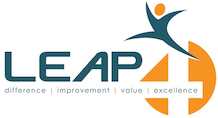As project management methodologies have been around since the 1900s and were further developed since the 1950s, they (e.g. PRINCE2, PMI/PMBOK, Lean Six Sigma, Agile, Goal Directed Project Management) are generally very comparable and an established requirement for any project. More
Change management, on the other hand, only began to emerge in 1980 and started to be more widely accepted in the 2000s. We find that change management methodologies differ from functional (e.g. McKinsey, Durke-Litwin) to process focus (e.g. Prosci, Conner, Kotter, Lewin) and are still often misunderstood, seen as difficult. However, research shows a structured approach to change management significantly improves outcomes and project success. More
To enable the most effective management of the transformation projects Leap4 provides:
Change management support
Insight into the optimal change management methodology and how to structure and integrate it with the preferred project management methodology:
- Structuring change management activities to align with the activities of the project management methodology Example
- This includes detailed activities and templates for areas such as:
- Transformation/Change/Improvement statement: understanding the impact of the change
- Stakeholders: understanding the key internal and external people and groups
- Communication: development and delivery of communications to establish awareness, understanding and the dialogue between stakeholders
- Organisation: development and incorporation of the new structure, roles, accountabilities, responsibilities and relationships within an organisation
- Performance: development of the key performance indicators for teams and individuals
- Culture: behaviours that will promote people performance required for the transformation and future
- Capabilities: understanding of the available and gap in capabilities in the organisation
- Development: learning and training for people to acquire skills and core competencies required in the future
- Recruitment: role identification, advertisement, appointment and on-boarding of internal and external people
Team capabilities requirements
Insight into the required project team capabilities to ensure the best team is assembled:
- Team requirements based on the project/program requirements
- High performing team roles, accountabilities and responsibilities

